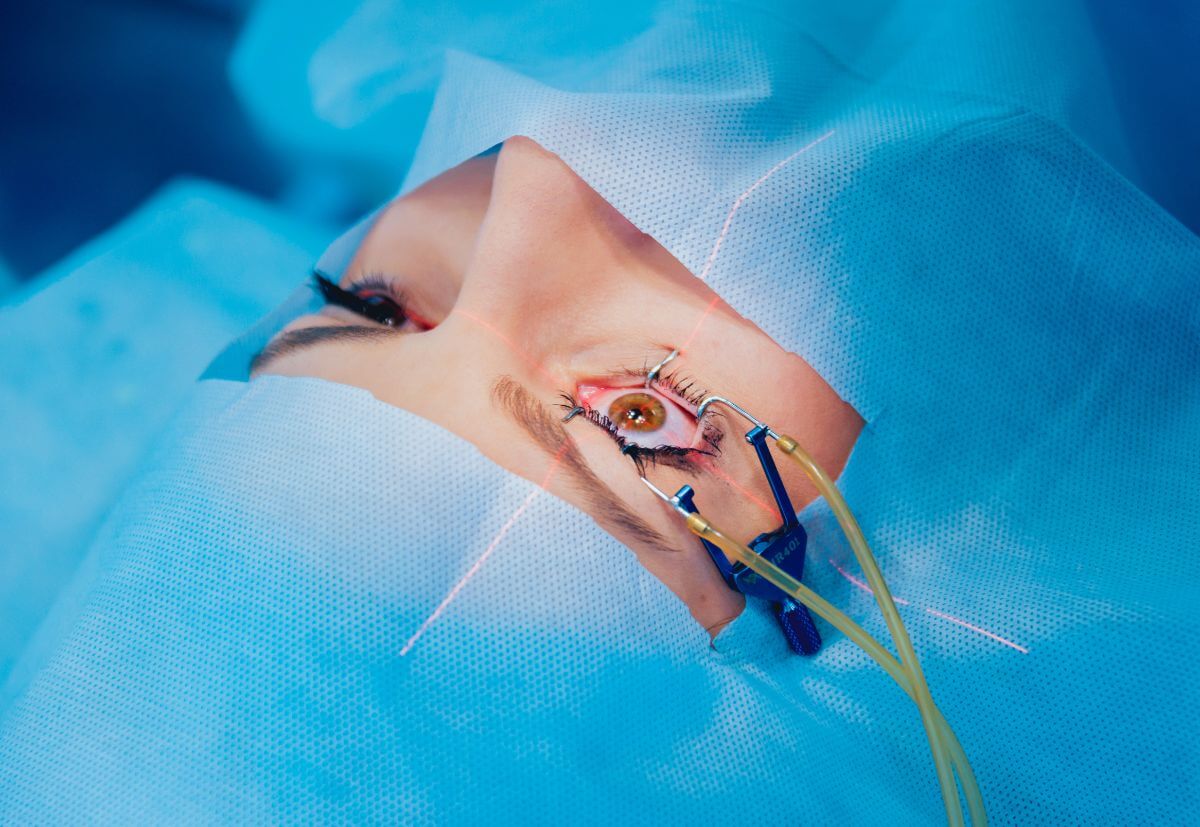In recent years, Indian healthcare industry has been growing at a double digit rate. The sector grew at a rate of 18 percent from 2010 till 2016 and is expected to reach USD 280 mil by 2020. The medical technology (medtech) plays a crucial part throughout the healthcare lifecycle and has been instrumental in transforming healthcare ecosystems across the world. For India too, it offers the potential to address healthcare issues by using a mix of nascent as well as advanced technologies.
Medtech is defined as any device, procedure, system developed to solve and improve quality of life. There are an estimated 1.5 million medical devices used worldwide. These devices are very crucial for the diagnosis and treatment of eye ailments.
A helping hand in the treatment of several eye disorders
In today’s world, with the availability of modern technology and advancements in technology and devices, serious eye ailments can be picked up much earlier than what was possible a few years back. Some of the major advancements that help in the treatment of eye disorders include:
ReLEx SMILE or Lasik Surgery
Long working hours and par use of electronic gadgets have led to sudden rise in the patients with refractive errors. According to World Health Organization (WHO), approximately 150 mil people live with visual impairment due to refractive errors. These include myopia (nearsightedness), hyperopia (farsightedness) and cylindrical refractive errors (astigmatism). With the advent of technology, ReLEx SMILE, the new generation laser vision correction offers clear, crisp vision without glasses. Being a bladefree & flapfree procedure, it helps you live a hassle-free life and say goodbye to glasses. The quality of life reported by patients who had undergone lasik procedure are feeling similar to patients who never wore glasses, and this has remained stable even 10-15 years later. This shows how comfortable patients feel after they have undergone this non-invasive correction to avoid wearing glasses and contact lenses. Compared to people who wore glasses and contact lenses, refractive surgery patients had a much higher quality of life. People who need glasses to see clearly resent their dependence on glasses which they feel restricts their lifestyle.

In recent years, Indian healthcare industry has been growing at a double digit rate. The sector grew at a rate of 18 percent from 2010 till 2016 and is expected to reach USD 280 mil by 2020. The medical technology (medtech) plays a crucial part throughout the healthcare lifecycle and has been instrumental in transforming healthcare ecosystems across the world. For India too, it offers the potential to address healthcare issues by using a mix of nascent as well as advanced technologies.
Medtech is defined as any device, procedure, system developed to solve and improve quality of life. There are an estimated 1.5 million medical devices used worldwide. These devices are very crucial for the diagnosis and treatment of eye ailments.
A helping hand in the treatment of several eye disorders
In today’s world, with the availability of modern technology and advancements in technology and devices, serious eye ailments can be picked up much earlier than what was possible a few years back. Some of the major advancements that help in the treatment of eye disorders include:
ReLEx SMILE or Lasik Surgery
Long working hours and par use of electronic gadgets have led to sudden rise in the patients with refractive errors. According to World Health Organization (WHO), approximately 150 mil people live with visual impairment due to refractive errors. These include myopia (nearsightedness), hyperopia (farsightedness) and cylindrical refractive errors (astigmatism). With the advent of technology, ReLEx SMILE, the new generation laser vision correction offers clear, crisp vision without glasses. Being a bladefree & flapfree procedure, it helps you live a hassle-free life and say goodbye to glasses. The quality of life reported by patients who had undergone lasik procedure are feeling similar to patients who never wore glasses, and this has remained stable even 10-15 years later. This shows how comfortable patients feel after they have undergone this non-invasive correction to avoid wearing glasses and contact lenses. Compared to people who wore glasses and contact lenses, refractive surgery patients had a much higher quality of life. People who need glasses to see clearly resent their dependence on glasses which they feel restricts their lifestyle.
Implantable Contact Lens (ICD)
Not everyone is fit for the lasik surgery. People with high powers and thin corneas have ICD to correct their refractive problems. An ICL is an ultra-fine lens made of collamer, a bio- compatible material with high water content and anti-reflective properties. It transmits light just like the
natural lens and has the added advantage of blocking out the harmful ultraviolet rays, thereby protecting the eye from further damage. The spherical ICL is available in a wide range of powers from -3 to -20 diopters and for people with astigmatism, the toric ICL can correct powers from -3 to -23 diopters and a cylinder upto 6 diopters. Most significantly, thin corneas are not a contra-indication at all. The lens is placed inside the eye between the iris and the natural lens and is invisible to both the patient and the observer. The cornea is not touched at all, so complications related to thin corneas are totally eliminated.
For the patients with thin cornea and high powers, there is no hope beyond lasik. Apart from ICL there are other viable options like other options include SBK or Sub-Bowman’s keratomileusis using the IntraLase femtosecond laser and surface PRK using Mitomycin C or Epi Lasik in which a thin sheet of corneal epithelium is removed to allow laser ablation, thereby saving more corneal tissue. Clear lens extraction with multifocal or toric IOL implantation may be considered in selected patients. For people with keratoconus with progressive thinning and steepening of the cornea, Collagen Cross Linkage (C3R) and INTACS can help to stabilize the disease process and improve the vision respectively.

OCT (Optical Coherence Tomography) and other innovative devices
Some of the latest computer programmes include Laser Polarimetry (GDx), Heidelberg Retinal Tomography (HRT) and Optical Coherence Tomography (OCT) of Optic Nerve Head (ONH)/ Retinal Nerve Fibre Layer (RNFL) and Ganglion Cell Complex (GCC macula). Also, faster techniques (Matrix/FDT) for assessing the functional loss are now available which take half the time taken by conventional visual field testing for glaucoma detection.
Laser Photocoagulation or Laser Treatment
Laser Photocoagulation is a boon for the diabetic patients. The treatment can save existing sight loss but cannot make it better. It seals the micro aneurysms that are leaking fluid into the retina. This is called the Focal or Grid laser photocoagulation and is done in a single sitting. If new blood vessels are growing, more extensive laser treatment has to be carried out which is called Pan Retinal Photocoagulation (PRP) and is carried out over two or three sittings spread over a few weeks. In most cases, laser treatment causes the new blood vessels to regress and the swelling to subside. Laser treatment usually takes three to four months to be fully effective.
Dr. Mahipal S. Sachdev, Chairman & Medical Director of Centre For Sight, was honored with Padma Shri Award in January 2007. He is a renowned Ophthalmic Surgeon, recognized for his expertise in the area of Corneal, Refractive & Cataract Surgery, both nationally and internationally. He is widely credited to be a pioneer in India for propagating the technique of Phacoemulsification for cataract surgery and Lasik Laser for removal of glasses. Dr. Mahipal was among the first to introduce Lasik and Phakic IOLs & Femtosecond laser technology for lasik. Dr. Mahipal also has pioneered blade free Femto Cataract technology in India.
